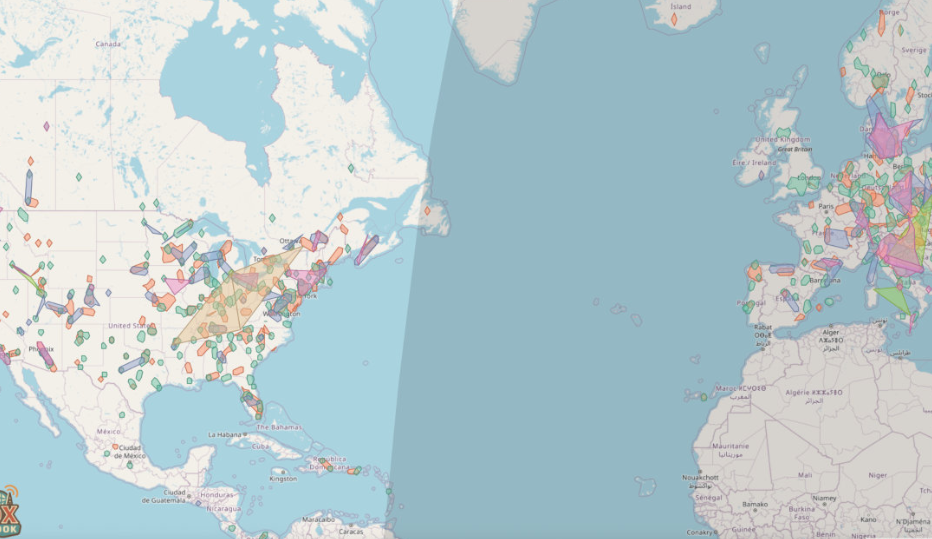Welcome to the fascinating world of HAM radio, where enthusiasts communicate across vast distances using nothing but waves and frequencies. If you’ve ever felt lost in this intricate realm or struggled with reporting your communications, DXLook is here to change that. This innovative tool simplifies the process of logging your contacts and understanding global propagation conditions. With its user-friendly interface and powerful features, DXLook empowers both newcomers and seasoned operators alike to navigate their HAM radio journeys with confidence.
Whether you’re chasing rare DX stations or just want a better way to manage your logs, there’s no denying that having the right tools makes all the difference. Dive into this article as we unveil how DXLook can transform your HAM radio experience from daunting to delightful!
The Benefits of Using DXLook for HAM Radio Reports
Using DXLook for HAM radio reports offers a range of advantages that enhance the user experience. For starters, it simplifies the process of logging contacts and tracking activity. This efficiency saves time, allowing operators to focus on what they love most—communicating.
DXLook provides real-time updates on propagation conditions. Users can access vital information instantly, improving their chances of making successful contacts around the globe.
The platform also features an intuitive interface that caters to both beginners and seasoned operators alike. Its easy navigation makes finding essential data a breeze.
With community-driven elements like alerts and notifications about upcoming events or rare DX stations, users stay informed and engaged in the vibrant world of amateur radio. These benefits position DXLook as an invaluable tool for anyone serious about enhancing their HAM radio experience.
Understanding the Features and Functions of DXLook
DXLook stands out with its user-friendly interface. Navigating through various features feels seamless, even for newcomers.
One of the standout functions is the real-time propagation data. This feature allows users to monitor signal conditions instantly, enhancing their chances of making successful contacts.
Another highlight is the comprehensive logbook system. It keeps track of your DXCC entities and helps manage QSL cards efficiently.
The integration with digital modes further elevates the experience. Users can quickly switch between modes without missing a beat during operations.
DXLook offers personalized alerts tailored to specific frequencies or stations of interest. This ensures you never miss out on vital communications or opportunities in your preferred bands.
Together, these features create an exceptional tool that enhances every user’s HAM radio journey—whether you’re a casual operator or a seasoned expert looking for deeper insights into global communication trends.
Step-by-Step Guide on How to Use DXLook for HAM Radio Reports
Getting started with DXLook is straightforward. First, create an account on their website. This step ensures you can access all the features without limitations.
After logging in, familiarize yourself with the dashboard. It’s user-friendly and intuitive, making navigation easy even for beginners.
Next, select your desired report type from the options available. Whether you’re looking for propagation forecasts or DX alerts, it’s all there at your fingertips.
Input relevant parameters like frequency range and time zone to customize your reports. The flexibility here allows you to tailor information specific to your needs.
Once you’ve set everything up, hit “Generate Report.” Within moments, you’ll receive detailed insights that enhance your HAM radio experience.
Don’t forget to explore additional tools offered by DXLook. They provide valuable resources such as logs and charts that enrich your understanding of radio communication patterns.
Tips and Tricks for Using DXLook Like a Pro
To maximize your experience with DXLook, start by customizing the interface. Tailor it to suit your workflow for quick access to essential features.
Utilize filters effectively. They allow you to sift through vast data quickly. Set parameters based on band conditions or geographical locations that interest you most.
Stay updated with real-time alerts. These notifications can be a game changer in catching rare DX opportunities as they happen.
Engage with the community. Connect with fellow HAM radio enthusiasts via forums and social media groups dedicated to DXLook usage. Sharing experiences and tips can enhance your skills significantly.
Document your findings as you use DXLook frequently. This practice not only helps track progress but also allows you to refine techniques over time, ensuring you’re always at the top of your game in navigating ham radio reports efficiently.
Conclusion
The future of DXLook appears promising, as it continues to evolve in response to the needs of its users. With technology advancing swiftly, DXLook is likely to incorporate even more features that enhance user experience and streamline HAM radio reporting.
As amateur radio enthusiasts become increasingly tech-savvy, tools like DXLook will play a crucial role in simplifying operations. The integration of real-time data and user-friendly interfaces can help expand accessibility for both novice operators and seasoned experts alike.
Looking ahead, partnerships with other platforms may further broaden the scope of what DXLook can offer. As community engagement grows through forums and collaborative projects, users might find new ways to utilize this powerful tool.
Staying informed about updates from DXLook will be vital for anyone looking to maximize their capabilities within the HAM radio landscape. Embracing these advancements can lead to richer experiences on airwaves while fostering connections among fellow operators worldwide.

